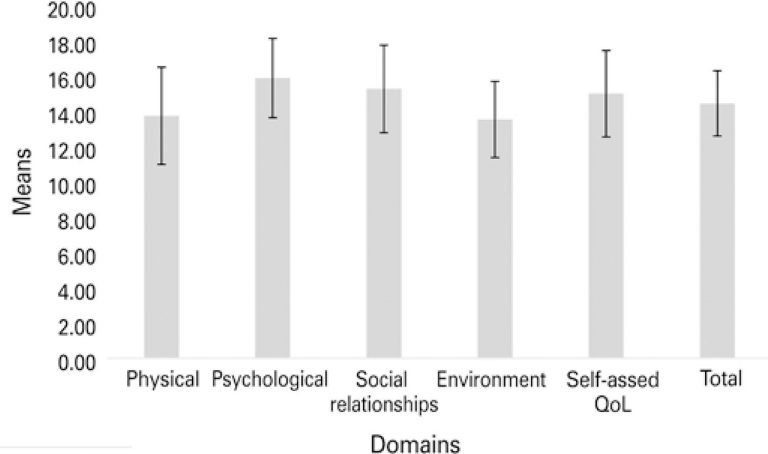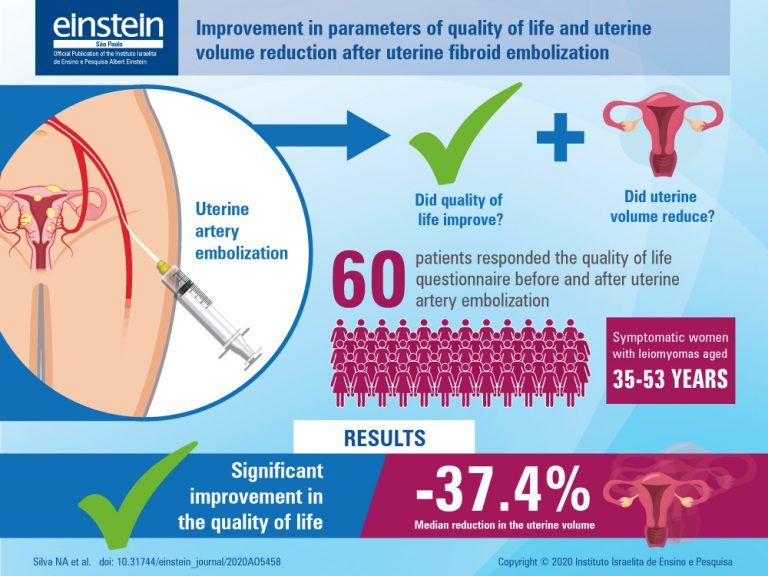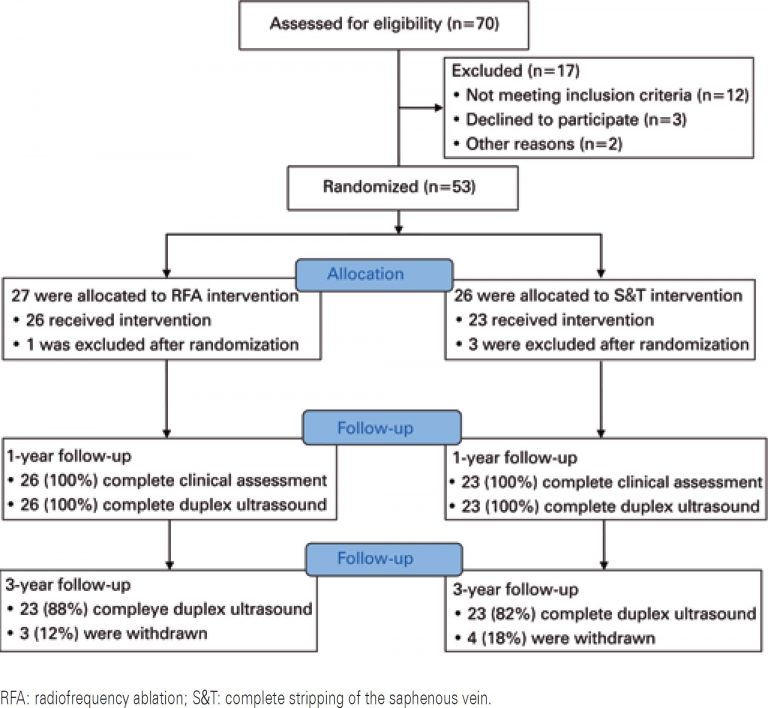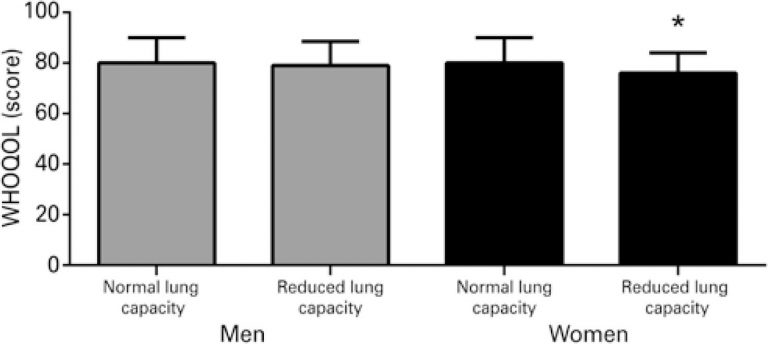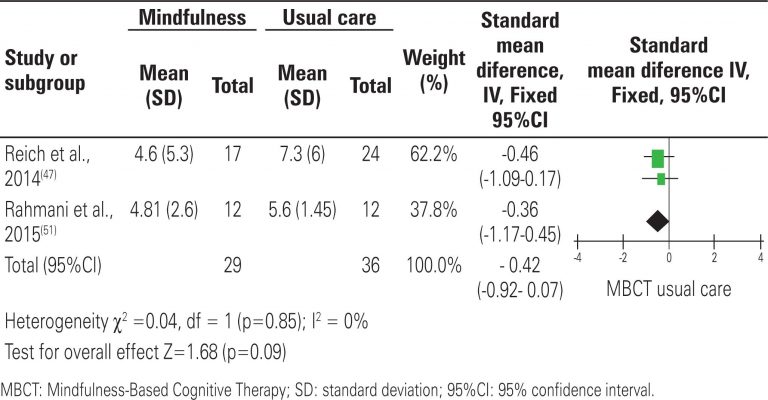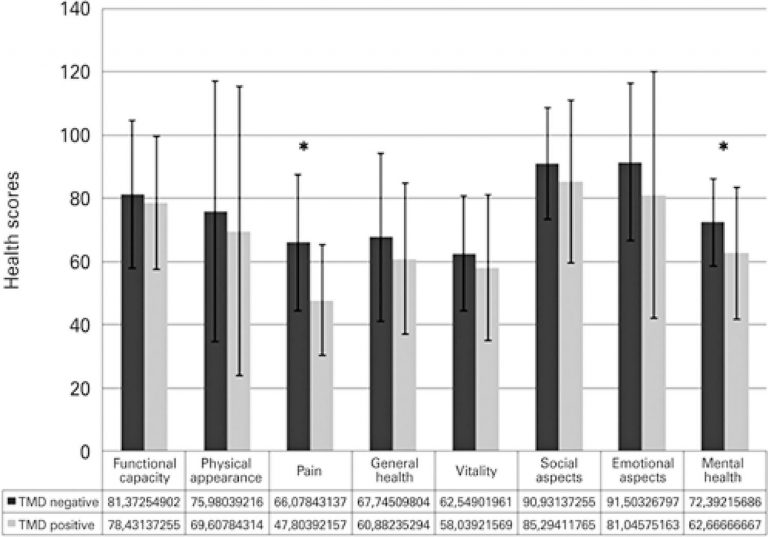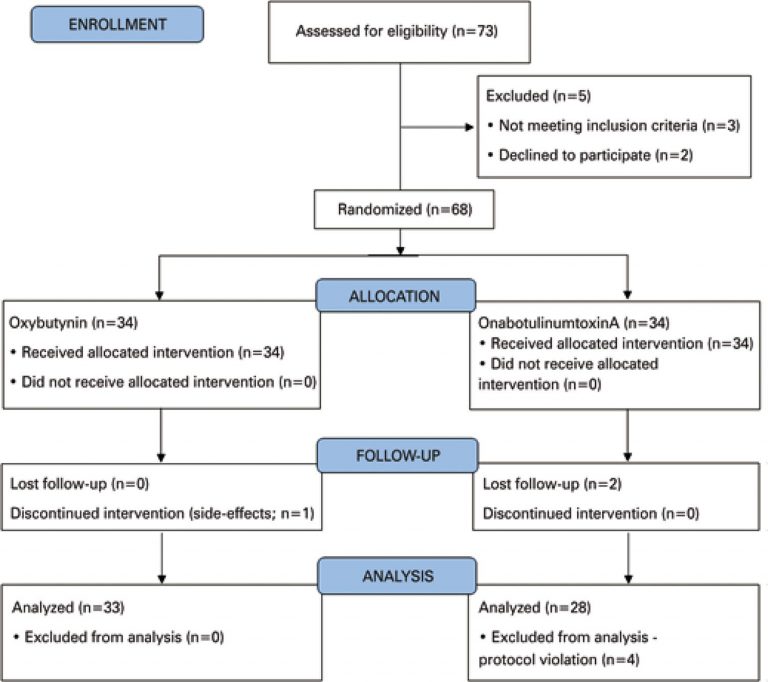12/Aug/2021
Factors associated to quality of life in patients with leprosy
DOI: 10.31744/einstein_journal/2021AO5936
ABSTRACT Objective To evaluate quality of life and associated factors in patients with leprosy. Methods A cross-sectional study with 63 people diagnosed as leprosy, seen at a reference service for the disease in the southeastern region of Mato Grosso, Brazil. The questionnaire World Health Organization Quality of Life Bref was used to evaluate quality of life. Simple and multiple linear regressions evaluated the association between sociodemographic variables and quality of life domains. Results The highest mean of quality of life […]
Keywords: Epidemiologic factors; Epidemiology; Leprosy; Public health; Quality of life
16/Sep/2020
Improvement in parameters of quality of life and uterine volume reduction after uterine fibroid embolization
DOI: 10.31744/einstein_journal/2020AO5458
ABSTRACT Objective To evaluate improvement in quality of life, reduction of uterine volume, and the correlation between these two variables after uterine fibroid embolization. Methods Data on quality of life before and after uterine fibroid embolization were collected from 60 patients using the Uterine Fibroid Symptom – Quality of Life questionnaire. In 40 of these patients, uterine volume information on magnetic resonance imaging examinations performed before and after uterine fibroid embolization was collected, and compared using the nonparametric Wilcoxon test […]
Keywords: Embolization, therapeutic; Leiomyoma; Quality of life; Treatment outcome
13/May/2020
Swallowing, voice and quality of life of patients submitted to extended supratracheal laryngectomy
DOI: 10.31744/einstein_journal/2020AO5390
ABSTRACT Objective To describe functional and quality of life results after extended supratracheal laryngectomy. Methods In the period from September 2009 to January 2018, 11 male subjects were submitted to extended supratracheal laryngectomy. Swallowing abilities were assessed through videofluoroscopy and the clinical scale Functional Communication Measures of Swallowing. The voices were classified by means of the perceptual-auditory analysis Consensus Auditory-Perceptual Evaluation of Voice. All subjects completed a self-assessment questionnaire for voice and swallowing. Results Aspiration was found in four patients […]
Keywords: Deglutiton; Laryngectomy; Quality of life; Treatment outcome; Voice
23/Jan/2020
Exposure to secondhand smoke among patients with asthma: a cross-sectional study
DOI: 10.31744/einstein_journal/2020AO4781
ABSTRACT Objective To estimate the frequency of secondhand smoke exposure among patients with asthma. Methods A cross-sectional study of asthma patients and non-asthmatic controls using questionnaires to identify secondhand smoke exposure at home, school, work, and public places. Results We studied 544 severe asthma patients, 452 mild/moderate asthma patients, and 454 non-asthmatic patients. Among severe patients, the mean age was 51.9 years, 444 (81.6%) were female, 74 (13.6%) were living with a smoker, 383 (71.9%) reported exposure in public spaces […]
Keywords: Asthma; Environmental exposure; Health policy; Quality of life; Tobacco smoke pollution/adverse effects
24/Apr/2019
Prospective randomized trial comparing radiofrequency ablation and complete saphenous vein stripping in patients with mild to moderate chronic venous disease with a 3-year follow-up
einstein (São Paulo). 24/Apr/2019;17(2):eAO4526.
View Article24/Apr/2019
Prospective randomized trial comparing radiofrequency ablation and complete saphenous vein stripping in patients with mild to moderate chronic venous disease with a 3-year follow-up
DOI: 10.31744/einstein_journal/2019AO4526
ABSTRACT Objective: To compare the use of the radiofrequency thermoablation of the saphenous vein with the ligation technique, and complete removal of the saphenous vein, from the saphenofemoral junction to the ankle. Methods: A total of 49 patients with chronic venous disease in the Comprehensive Classification System for Chronic Venous Disorders (CEAP) classes 2 to 4 for clinical signs, etiology, anatomic distribution and pathophysiology, were assessed at baseline, after 4 weeks, and after 1 year. The parameters assessed were complications, […]
Keywords: Catheter ablation/methods; Quality of life; Radio waves; Saphenous vein/surgery
28/Jan/2019
Association between respiratory capacity, quality of life and cognitive function in elderly individuals
DOI: 10.31744/einstein_journal/2019AO4337
ABSTRACT Objective To investigate associations between respiratory capacity, quality of life and cognitive function in elderly individuals. Methods The sample included 386 elderly individuals (232 women). Respiratory capacity assessment was based on maximal expiratory pressure measured at peak expiratory flow. Subjects were classified according to peak expiratory flow values adjusted for sex, age and height of individuals with normal (peak expiratory flow curve 60%) or reduced (peak expiratory flow curve < 60%) respiratory capacity. The World Health Organization Quality of [...]
Keywords: Aged; Cognition; Maximal voluntary ventilation; Quality of life
26/Nov/2018
Mindfulness-Based Stress Reduction on breast cancer symptoms: systematic review and meta-analysis
DOI: 10.31744/einstein_journal/2018RW4383
ABSTRACT Mindfulness-Based Stress Reduction practices increase the capacity for concentration and attention, and these practices are particularly effective for people with breast cancer. To analyze the effects of the application of Mindfulness-Based Stress Reduction on breast cancer symptoms. Systematic review and meta-analysis were carried out. To find suitable studies, the PubMed/ MEDLINE database was searched using the keywords “breast cancer” and “Mindfulness-Based Stress Reduction”. Studies included were published between 2013 and 2017, written in English and showed methodological quality through […]
Keywords: Breast neoplasms; Meditation; Psychosocial intervention; Quality of life; Stress, psychological
21/Nov/2018
Clinical, dietary and demographic characteristics interfering on quality of life of cancer patients
DOI: 10.31744/einstein_journal/2018AO4368
ABSTRACT Objective To estimate the dietary intake of cancer patients and its relation with clinical and demographic characteristics, and to assess the contribution of dietary intake, appetite/symptoms and clinical and demographic characteristics to their quality of life. Methods The consumption of energy and macronutrients of patients was estimated. The relation between dietary intake and clinical and demographic characteristics was evaluated by analysis of variance. The intake of energy and macronutrient of the patients was compared to the nutritional recommendations using […]
Keywords: Dietetics; Eating; Neoplasms; Quality of life
21/Nov/2018
Is quality of life affected by temporomandibular disorders?
DOI: 10.31744/einstein_journal/2018AO4339
ABSTRACT Objective To determine the impact of temporomandibular disorders in quality of life. Methods A total of 102 volunteer patients (68 female) aged 19 to 86 years, who sought medical care in health clinics of the university and were evaluated in the period from September to December 2013. The subjects were examined according to the Research Diagnostic Criteria for Temporomandibular Disorders, using a mechanical algometer (Palpeter®) with standardized pressure of 0.5 and 1.0kg, and Medical Outcomes Study 36-Item Short Form […]
Keywords: Diagnosis; Facial pain; Quality of life; Temporomandibular joint; Temporomandibular joint disorders
01/Aug/2018
Intradetrusor onabotulinumtoxinA injections are significantly more efficacious than oral oxybutynin for treatment of neurogenic detrusor overactivity: results of a randomized, controlled, 24-week trial
einstein (São Paulo). 01/Aug/2018;16(3):eAO4207.
View Article01/Aug/2018
Intradetrusor onabotulinumtoxinA injections are significantly more efficacious than oral oxybutynin for treatment of neurogenic detrusor overactivity: results of a randomized, controlled, 24-week trial
DOI: 10.1590/S1679-45082018AO4207
ABSTRACT Objective To prospectively compare the results of intradetrusor onabotulinumtoxinA injections and oral oxybutynin for urinary continence, urodynamic parameters and quality of life in patients with neurogenic detrusor overactivity due to spinal cord injury. Methods Adult patients under intermittent catheterization were randomized 1:1 to receive one injection of onabotulinumtoxinA 300U or oxybutynin 5mg, per oris, three times/day. Primary study endpoint was change in urinary incontinence episodes/24 hours and secondary study endpoints were maximum cystometric capacity, maximum detrusor pressure, bladder compliance […]
Keywords: Botulinum toxins, type A; Mandelic acids; Quality of life; Spinal cord injury; Urinary bladder, neurogenic; Urodynamics


